The forgotten trout of the Volcano.
Here is the first article by one of our friends, Kevin Chambon, a fly fishing guide on Reunion Island and in the river Verdon, French southern Alps!
Once upon a time in the Indian Ocean, there was a pebble, a graceful protuberance… A volcanic island whose summit rises to over 3,000 meters. This roof of the Indian Ocean, the Piton des Neiges, is part of the claim to fame of this magnificent rock known as Reunion Island. But the Piton des Neiges is not only the dominant feature, it is also the origin of the three great cirques: Salazie, Mafate and Cilaos. The result of the collapse of the volcano’s magma chambers, these cirques attract thousands of tourists and nature lovers every year.
The island is even better known for its still-active volcano, Piton de la Fournaise, for its inhabitants, whose spirit of togetherness is a guarantee of wonderful encounters, and for being a formidable playground for all nature-sports enthusiasts.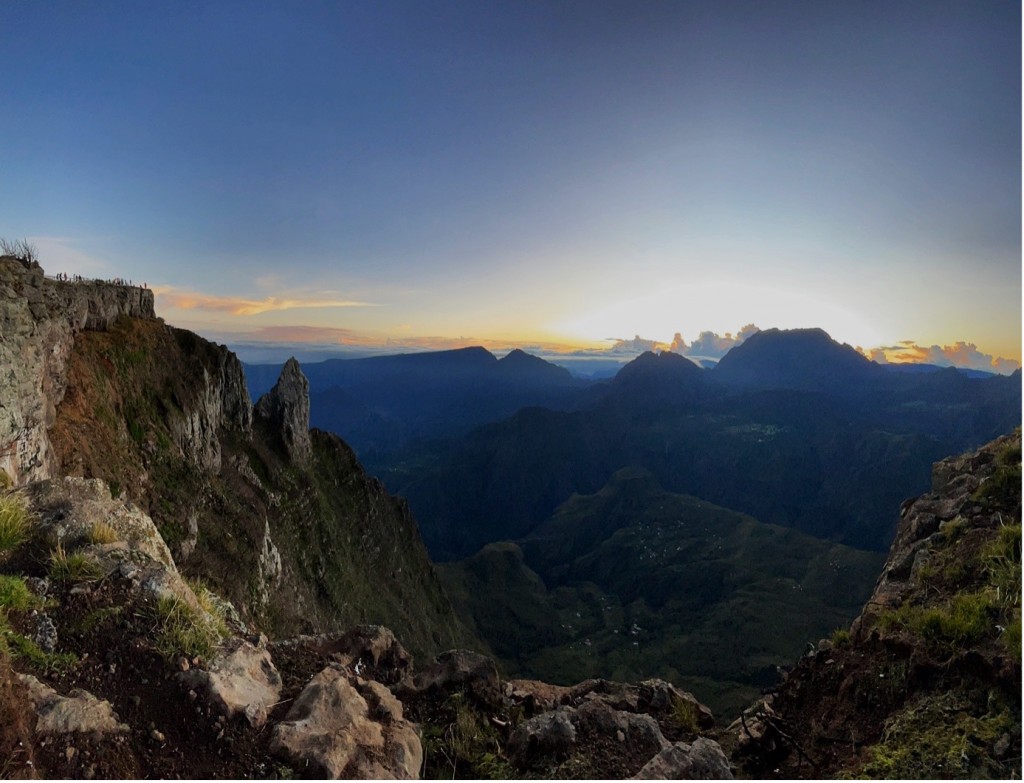
On the other hand, it is much less famous for its wild trout and the enchanting landscapes in which they can be found…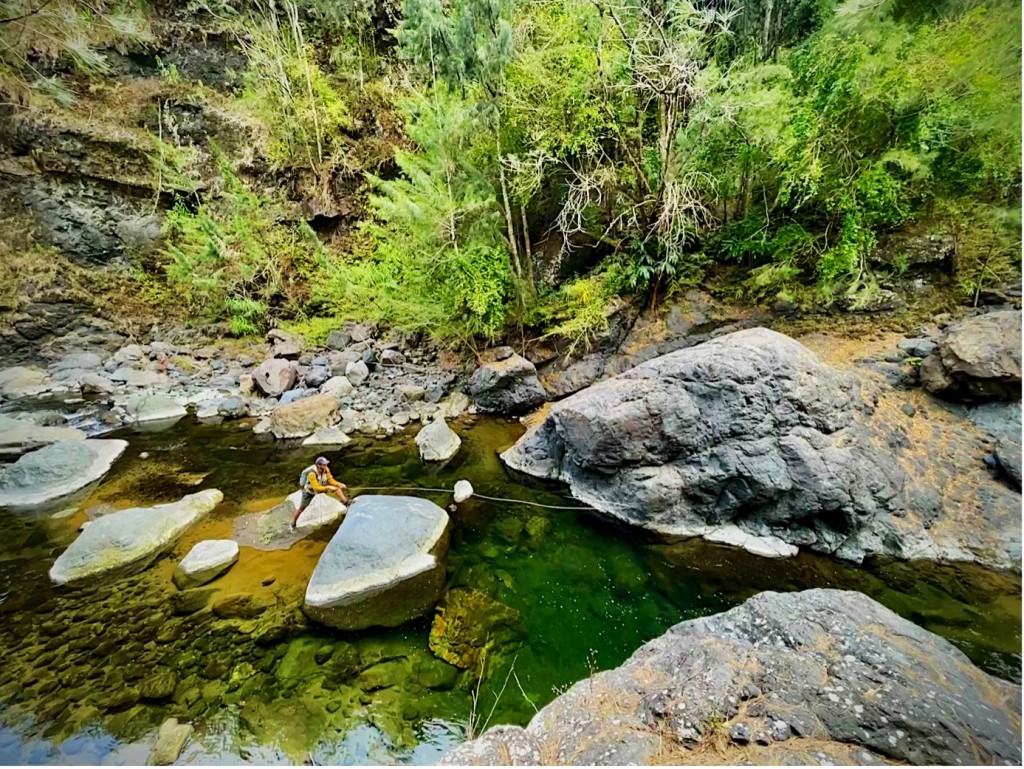
It all begins as the dew falls, taking the place of the slowly fading night. The coffee pot crackles as the first hints of Arabica perfumes the air. 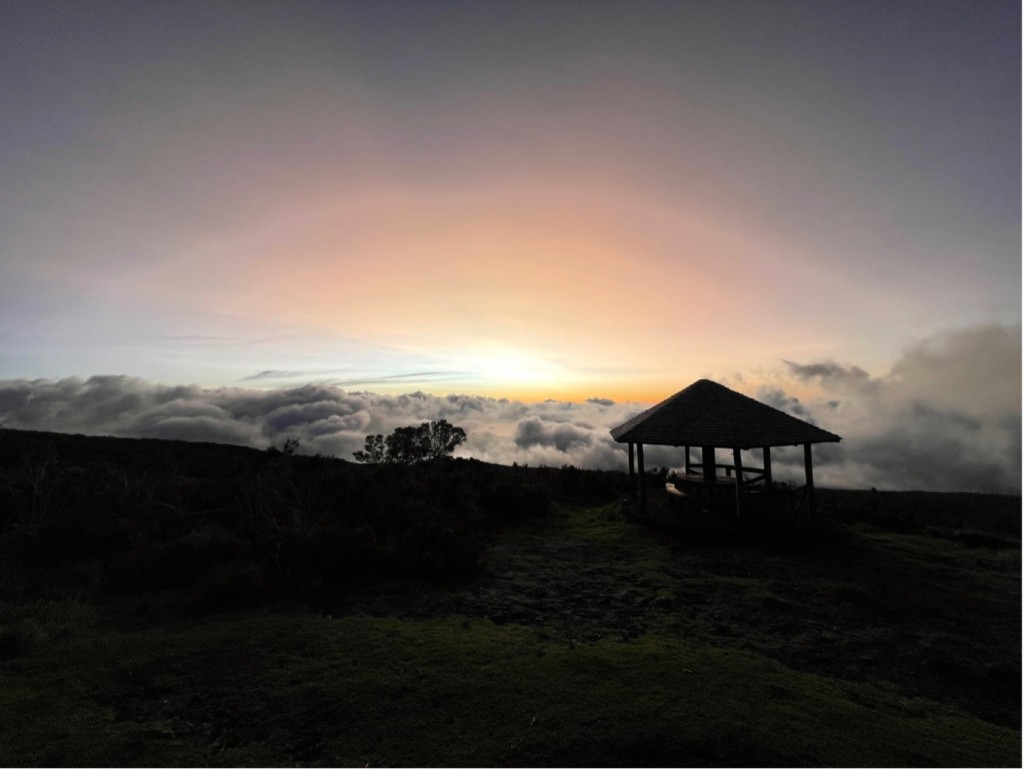 This seems to bring the first light of day and the first birdsong. In this atmosphere of the world’s first morning, we watch the sun emerge from the ocean as far as the eye can see. Suspended in this graceful moment, this coffee has a particularly intense flavor.
This seems to bring the first light of day and the first birdsong. In this atmosphere of the world’s first morning, we watch the sun emerge from the ocean as far as the eye can see. Suspended in this graceful moment, this coffee has a particularly intense flavor.
Once we’ve woken up and packed up camp, it’s time to begin our expedition to reach the bottom of the valley, whose rumours are wild, lush and populated by trout in sublime robes.
The approach hike is efficient, steep but not dangerous. As expected, the vegetation is vibrant and the tropical green that emerges is a delight to the eye. We play hide-and-seek with Cardinals, Tec-Tecs and even Weaverbirds as soon as we come across a clump of bamboo.
And it’s at the bend in a small gully that we finally catch sight of the river. Our hearts beat faster at the thought of this little unknown paradise and the potential surprises it holds in store for us. Without thinking twice, our walking pace quickens too, and we reach the riverbank in less than half an hour.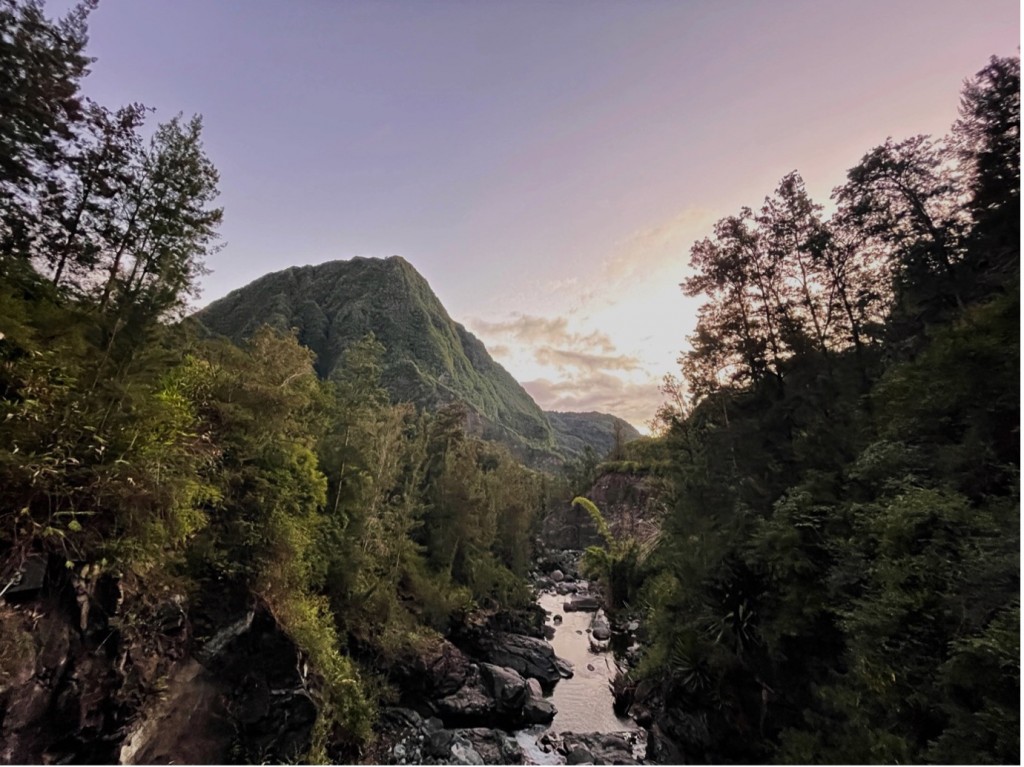
Trembling with impatience, the rods are up in no time. The thermos and Top25 are brought out for a final briefing over a cup of coffee. Then we set off in search of signs of life in the river. Although the trout don’t betray their presence yet, a few insects do seem to be present.
At this point, the meander reveals a large, gently flowing flat. Now that the sun has penetrated the valley, discreet hatches pierce the surface of the water. Here we are, at last.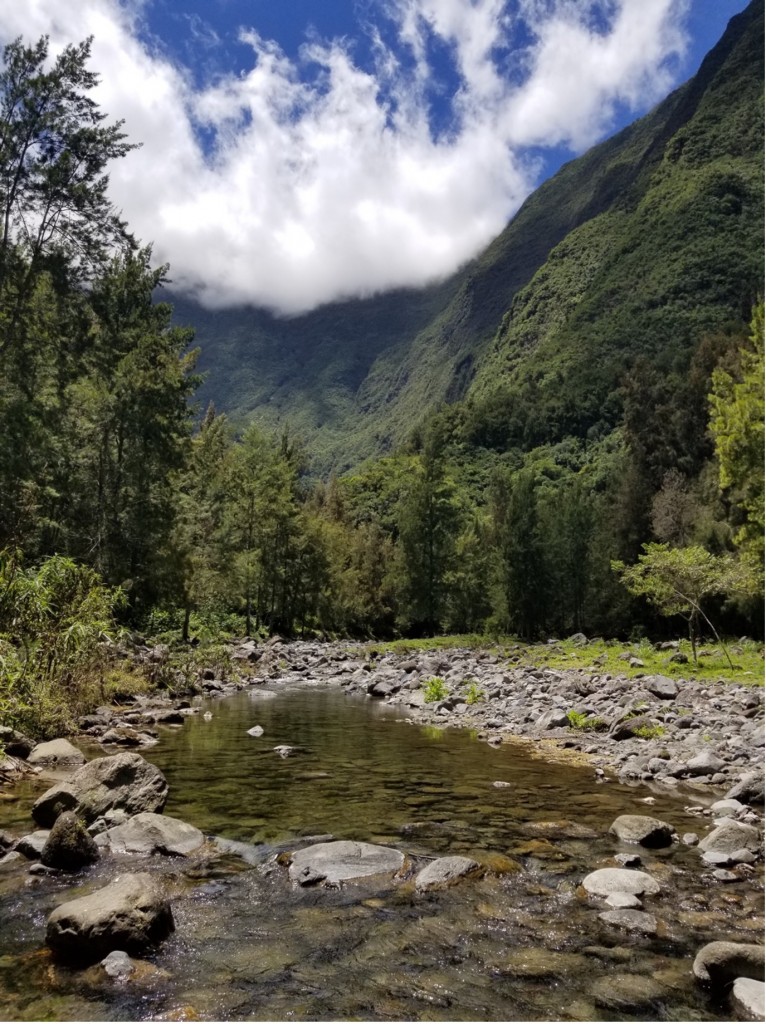
Taking our time to savor the moment, we tie a small ephemeral imitation to our tip. We choose the shady bank to position ourselves discreetly (and optimally) for our first drifts. The gobbling continues and seems to betray the presence of several fish in position.
We attack the fish furthest downstream. The first drift seems natural, but is not rewarded with any reaction.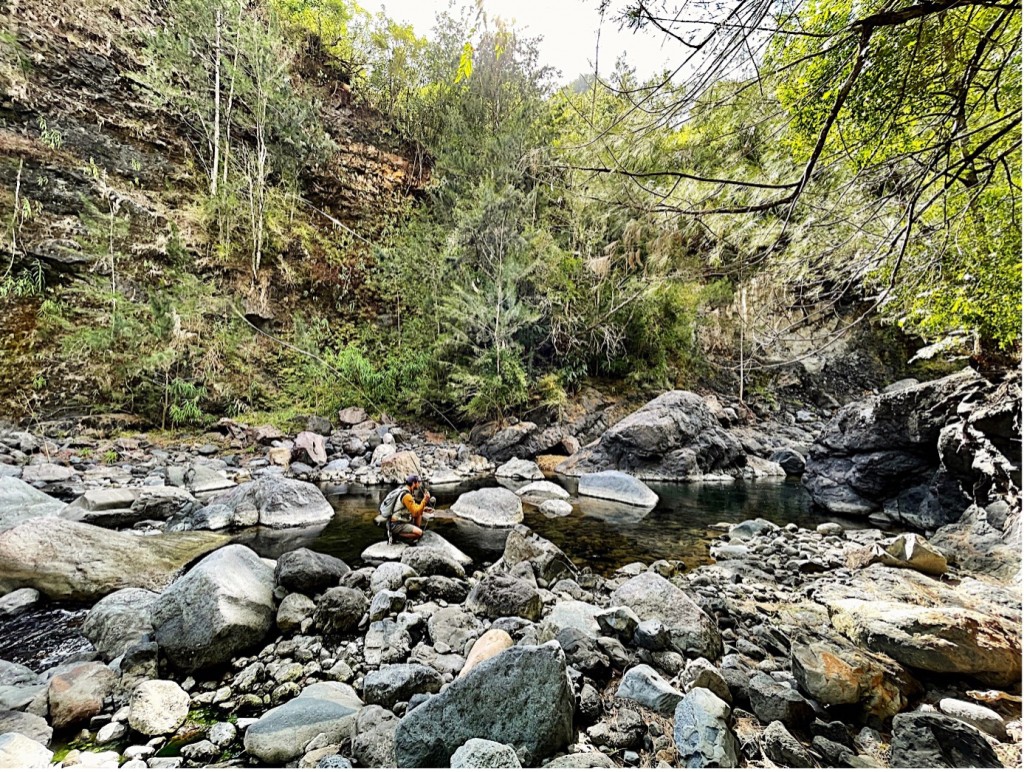
With barely concealed pleasure, we plunge into solving the fly-fisherman’s equation to identify THE right fly.
A little observation to try and glean some clues as to the type of insect drifting and being snapped up by the fish in position. The fish seem to be feeding in the film of tiny insects. We opt for an imitation whipworm in size 18. Cream-colored body and CDC wing.
The second drift follows on from the first, with the difference that this one ends hastily with a clean gobble. What a delight!
The fight is brief and a magnificent wild rainbow trout joins the net. One of the trout of the Volcan, these wild fish, forgotten in the cirque bottoms of Ile Bourbon.
Despite the beauty of this fish and the desire to make the moment last, we handle it as little as possible and release it very quickly.
A deep breath and a glance at the river to soak up this floating moment. Naturally, our eyes turn upstream, a smile is exchanged, and our minds drift off to the treasures these gorges hold, and to the day that’s just begun…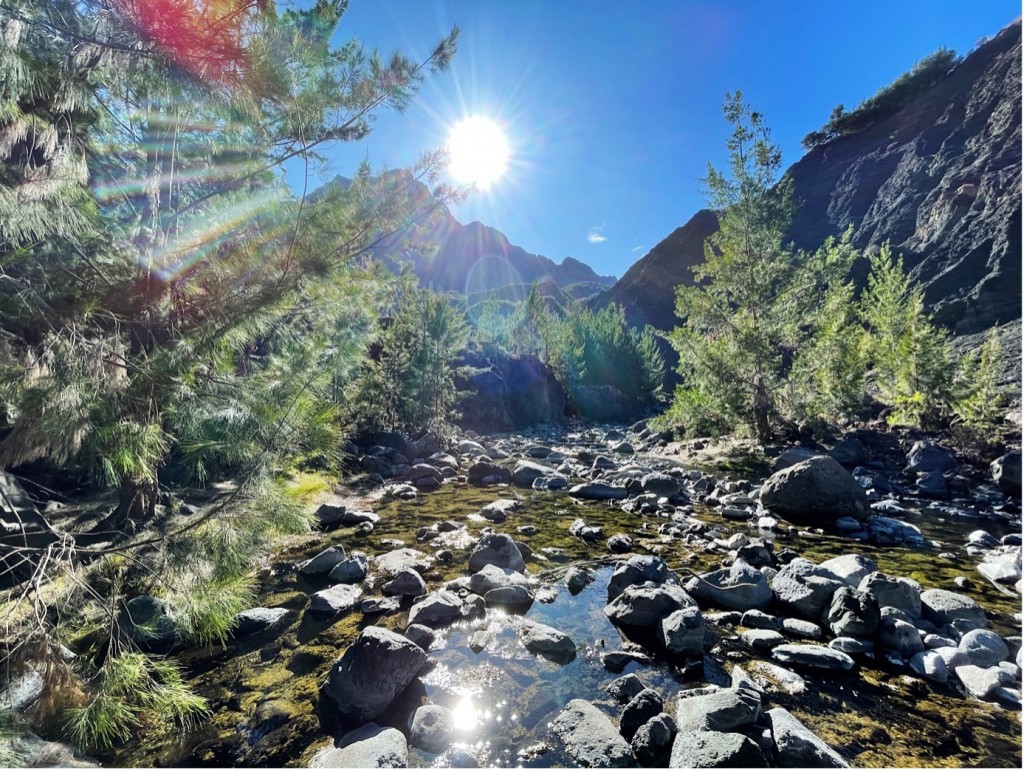
A word about the forgotten trout
It’s important to point out that fly-fishing for salmonids on a tropical island is exceptional. This is made possible by the topography of Reunion Island and the durability, both quantitative and qualitative, of some of its rivers.
Rainbow trout are not endemic to the island, but were introduced during the last century. Having found a favorable biotope, the Rainbow trout is now able to reproduce naturally in certain environments. As a result, the fish we fly fish for in these sublime rivers are totally wild.
These environments are exceptional, but also very fragile. The rainbow trout populations found there appear to be generally balanced and healthy, but they are subject to a number of climatic and anthropogenic hazards. So it’s important to be aware of them and take care of them.

 Français
Français